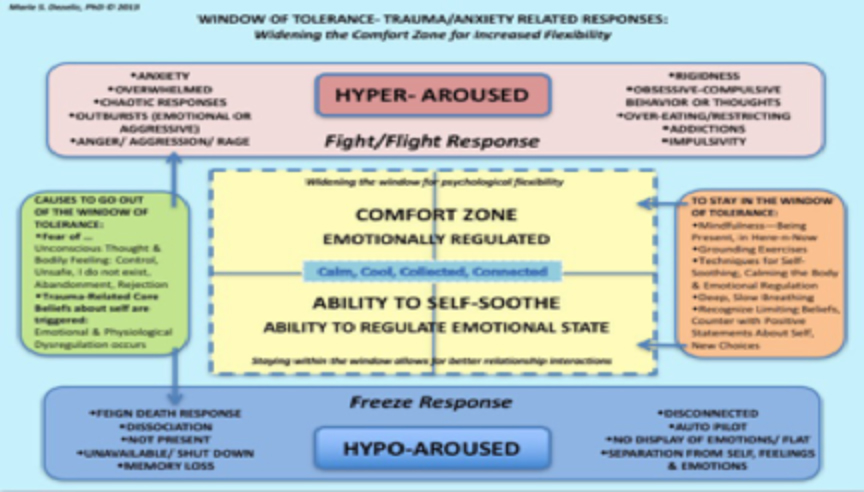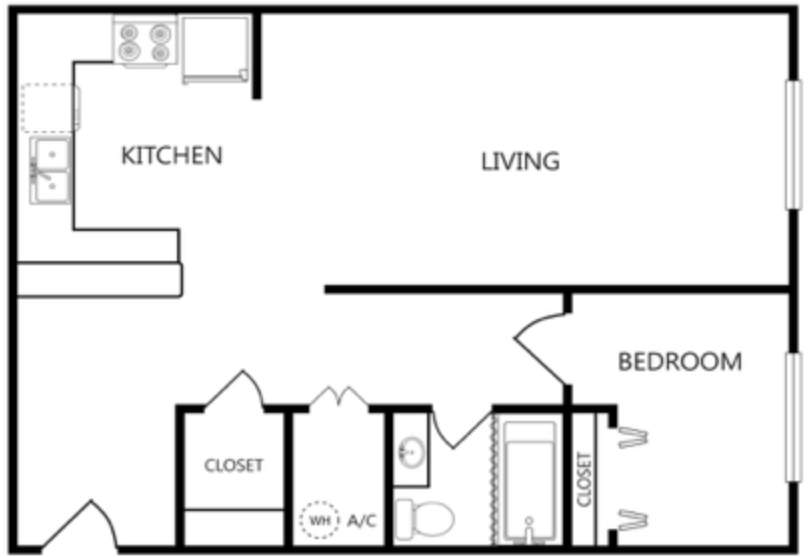Addiction & Recovery – Boundaries
Tips and coping strategies from week 3 of the Addiction Recovery workshop with therapist Nicki Line.
Boundaries can be identified in each of the following areas:
Physical : What are your boundaries around physical contact?
Psychological: What are your boundaries around topics of conversation, personal information being shared, subject matter and things of that nature?
Emotional: With whom do you want to share your feelings with? How much emotion are you willing to take on from other people?
Spiritual: What are your boundaries around religion or other forms of spirituality, or lack thereof?
General: Other boundaries not covered through these topics.
Hard v Soft boundaries.
Hard boundaries are those boundaries that you are unwilling to compromise.
Soft boundaries are boundaries that allow for more flexibility and can be adapted.
Window of Tolerance
We discussed the window of tolerance, and how as we work through the things that trigger either a hyper-aroused response, or a hypo-aroused response, this window of tolerance (comfort zone on the graphic below) grows larger and larger.

As our window of tolerance grows, we are better able to stay in a regulated level of arousal, and we can return to this level of arousal more quickly and easily.
Taking Care of Others
Everybody in our lives has problems and issues, but what is important to pay attention to is whether or not they are actively and genuinely working on them. It is okay to be supportive, but always stop to ask yourself “Am I Working harder for this person than they are working for themselves?” as well as “ I am working harder for this person than I am working for myself?”
Remember: put your air mask on before helping others with theirs.
Color wheel of awareness
White= chill not focused on anything, in a safe zone
Yellow= noticing things but not focused on danger
Orange= found a threat and I am aware of it. Ex- person over there has a hand in his pocket.
Red= Found a threat, hyper focused on it.
Black= tunnel vision. Cannot see anything else. Only tunneled in on the threat.
Living in level orange or higher constantly is not good for the adrenal system. I tis likely you are going to experience physiological symptoms such as fatigue, digestive issues, headaches etc.
Boundary House
Using this blank outline of a house can help you decipher the boundaries you wish to draw with the people in your life, by visualizing how close the relationships are/ you would like them to be. Place the people in your life in either the bedroom, kitchen, living room or porch.

A general guideline:
Porch: You know this person, and may be acquainted with them but you are not going to let them into your house.
Living room: This is where you have friends come over, and you may hang out in here, but this person is not going to feel free to go rummaging through your kitchen and making themselves a snack.
Kitchen: This person is going to feel comfortable enough in your home to come in, go to your kitchen, grab themselves a snack or a drink without you doing it for them.
Bedroom: This is the most intimate of spaces, reserved for the most intimate of your relationships.




